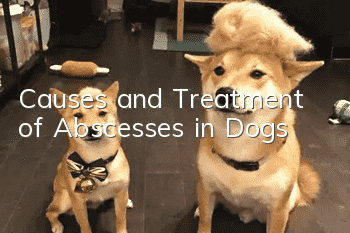What do animals with hyperglycemia need to pay attention to?

Hyperglycemia is not only a high-risk disease among middle-aged and elderly people, but also a disease that pets are susceptible to. What should you do if your dog has diabetes? Canine diabetes is an endocrine disease of dogs, clinically characterized by hyperglycemia, glycosuria, polyuria, polydipsia, polyphagia, and weight loss. Obese old dogs over 5 years old are prone to this disease (dogs aged 8 to 9 years old have the highest incidence rate)
What should I do if my dog has diabetes? What are the symptoms of canine diabetes?
What should you do if your dog has diabetes? Canine diabetes is an endocrine disease of dogs, clinically characterized by hyperglycemia, glycosuria, polyuria, polydipsia, polyphagia, and weight loss. Obese old dogs over 5 years old are prone to this disease (dogs aged 8 to 9 years old have the highest incidence), and the incidence rate in female dogs is 2 to 4 times that of male dogs.
1. Causes of canine diabetes:
1. The direct cause is: insufficient secretion of insulin in the endocrine secretion of the dog’s pancreas.
2. Liver disease prevents glycogen from accumulating.
3. The sugar center in the medulla oblongata is stimulated and blood sugar increases.
4. Diseases of the adrenal glands, thyroid gland, and pituitary gland will increase blood sugar when their functions become hyperactive.
5. Sedatives, anesthetics, thiazides, phenytoin and other drugs affect the release of insulin.
2. Clinical symptoms of canine diabetes:
1. The main symptoms of dogs suffering from diabetes are irritability, thirst, polyuria, gluttony, weakness and weight loss;
2. When the condition of the sick dog is serious, the exhaled breath will smell like ketone. If it progresses further, stubborn vomiting and bloody diarrhea may occur, leading to acidosis and eventually diabetic coma;
3. Blood sugar increases. In dogs, it is usually 75-120 mg/100 ml. In this disease, it increases to 150 mg/100 ml, and sometimes even reaches 400 mg/100 ml;
4. In the final stage, it may cause corneal ulcers, cataracts, vitreous opacity, omental detachment, blindness, skin ulcers, hair loss, heart failure, and even coma;
3. Prevention and treatment measures for canine diabetes:
1. The treatment principle of this disease is to lower the dog’s blood sugar and correct water, electrolysis and acid-base balance disorders.
2. Send the dog to the hospital for diagnosis and treatment in time, and take medicine on time according to the veterinarian's instructions for long-term treatment.
3. Feed therapy is the basic treatment method for canine diabetes. The principle is to give low-carb foods, such as meat, milk, etc.; supplement with sufficient amounts of B vitamins; feed regularly and quantitatively, in small amounts many times.
4. Urgent need to control high blood pressureFor those who treat sugar and correct metabolic disorders, rapid-acting insulin is used; for those whose condition is stable, long-acting or intermediate-acting insulin is generally used.
5. Oral hypoglycemic drugs. Commonly used drugs include phenylcyclohexylurea acetate, chlorpropamide, tolbutamide, and hypoglycemic agents. It is generally limited to sick dogs whose blood sugar does not exceed 200 mg per 100 ml and is not accompanied by ketonemia.
6. Insulin therapy, half an hour before morning feeding, subcutaneously inject 0.5 micrograms/kg body weight of intermediate-acting insulin once a day. For sick dogs with ketoacidosis, crystallized insulin or semi-slow insulin zinc suspension can be used, with low-dose continuous intravenous infusion or low-dose intramuscular injection. The intravenous injection dose is 0.1 micrograms/kg body weight, and the intramuscular injection dose is 0.1 μg/kg body weight. 1 microgram for more than 3 kilograms and 2 micrograms for less than 10 kilograms.
7. For fluid therapy, lactated Ringer's solution, 0.45% sodium chloride solution and 5% glucose solution can be used. The amount of intravenous fluid should generally not exceed 90 ml/kg of body weight. You can first inject 20-30 ml/kg of body weight, and then inject slowly. And timely supplement potassium salt.
- How to train an adult Bichon Frize? The editor will teach you!
- How to feed Chow Chow? How to feed Chow Chow at home!
- What should I do if my dog vomits and won’t eat? What causes dogs to vomit?
- Why do dogs always drool? Why dogs drool!
- How to properly trim your pet’s nails? What should I do if the blood line is cut?
- Dog started vomiting the next day after eating bones
- The benefits and methods of feeding kelp to dogs
- Dog's Family Diet
- How to train a dog to find things? Novices, come and watch!
- How to train Pitbull muscles, Pitbull daily training!



